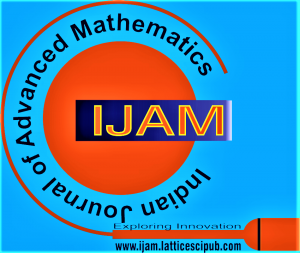Weighted Average Based Differential Quadrature Method for One-Dimensional Homogeneous First Order Nonlinear Parabolic Partial Differential Equation
Kedir Aliyi Koroche
Kedir Aliyi Koroche, Department of Mathematics, College of Natural and Computational Sciences, Ambo University, Ambo, Ethiopia.
Manuscript received on 04 April 2021 | Revised Manuscript received on 08 April 2021 | Manuscript Accepted on 15 April 2021 | Manuscript published on 30 April 2021 | PP: 15-28 | Volume-1 Issue-1, April 2021 | Retrieval Number:100.1/ijam.B1104101121 | DOI: 10.54105/ijam.B1104.041121
Open Access | Ethics and Policies | Cite | Mendeley | Indexing and Abstracting
© The Authors. Published by Lattice Science Publication (LSP). This is an open-access article under the CC-BY-NC-ND license (http://creativecommons.org/licenses/by-nc-nd/4.0/)
Abstract: In this paper, the weighted average-based differential quadrature method is presented for solving one-dimensional homogeneous first-order non-linear parabolic partial differential equation. First, the given solution domain is discretized by using uniform discretization grid point. Next, by using Taylor series expansion we obtain central finite difference discretization of the partial differential equation involving with temporal variable associated with weighted average of partial derivative concerning spatial variable. From this, we obtain the system of nonlinear ordinary differential equations and it is linearized by using the quasilinearization method. Then by using the polynomial-based differential quadrature method for approximating derivative involving with spatial variable at specified grid point, we obtain the system of linear equation. Then they obtained linear system equation is solved by using the LU matrix decomposition method. To validate the applicability of the proposed method, two model examples are considered and solved at each specific grid point on its solution domain. The stability and convergent analysis of the present method is worked by supported the theoretical and mathematical statements and the accuracy of the solution is obtained. The accuracy of the present method has been shown in the sense of root mean square error norm and maximum absolute error norm and the local behavior of the solution is captured exactly. Numerical versus exact solutions and behavior of maximum absolute error between them have been presented in terms of graphs and the corresponding root mean square error norm and maximum absolute error norm presented in tables. The present method approximates the exact solution very well and it is quite efficient and practically well suited for solving the non-linear parabolic equation. The numerical result presented in tables and graphs indicates that the approximate solution is in good agreement with the exact solution.
Keywords: Non-linear parabolic equation, Burger equation, Differential quadrature method, weighted average, Stability and Convergent Analysis, Root mean square and Maximum absolute error.
Scope of the Article: Numerical Analysis
